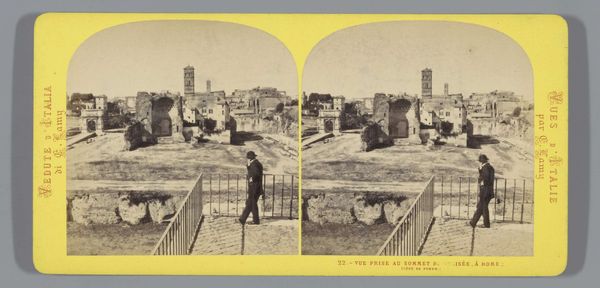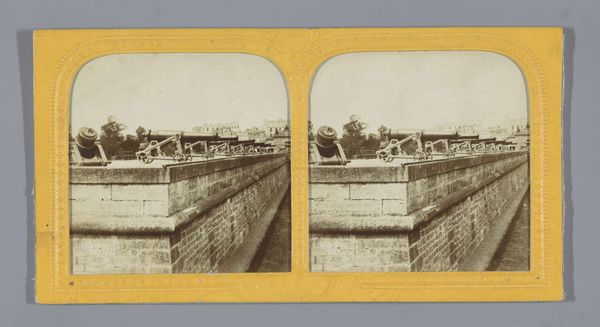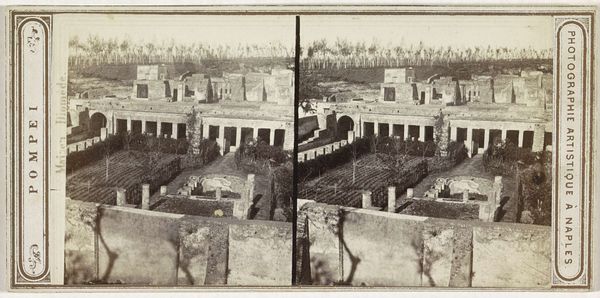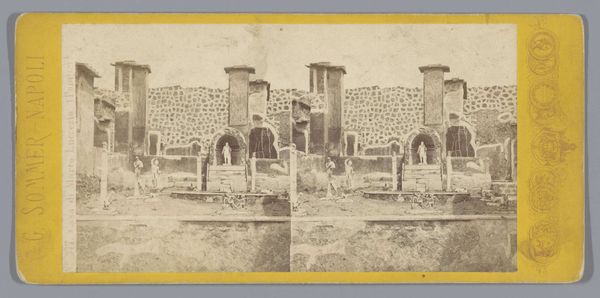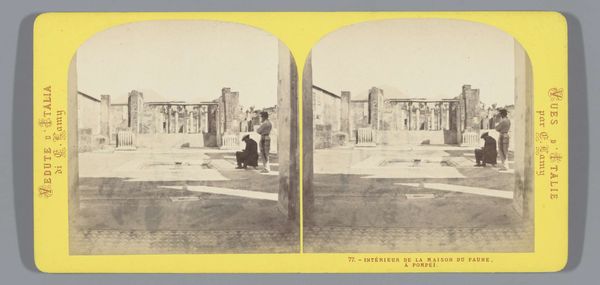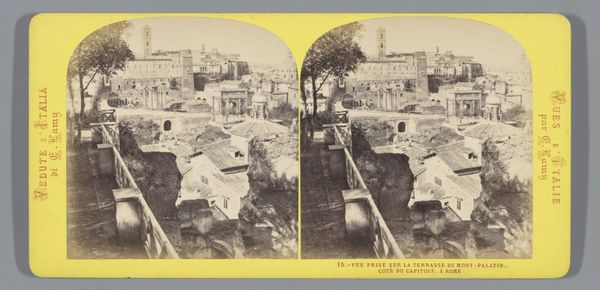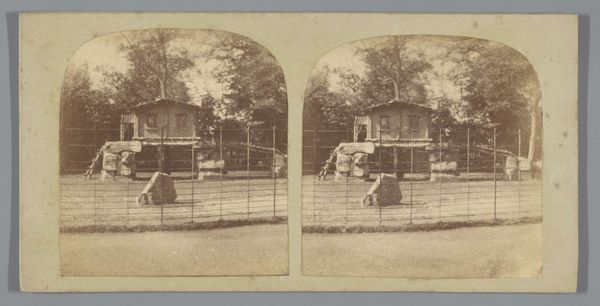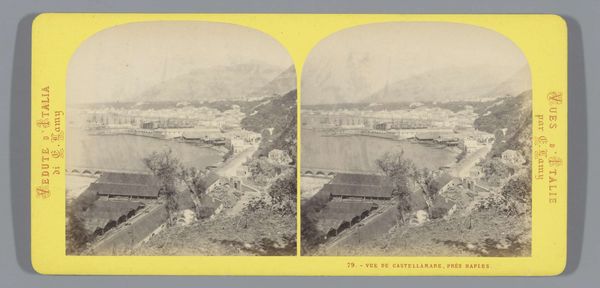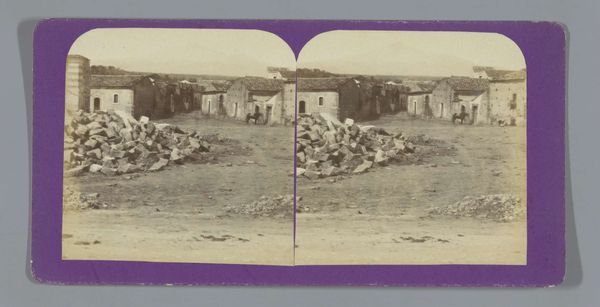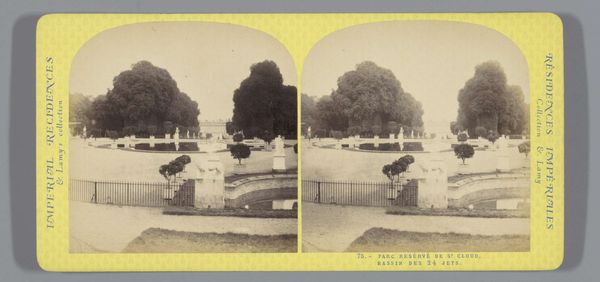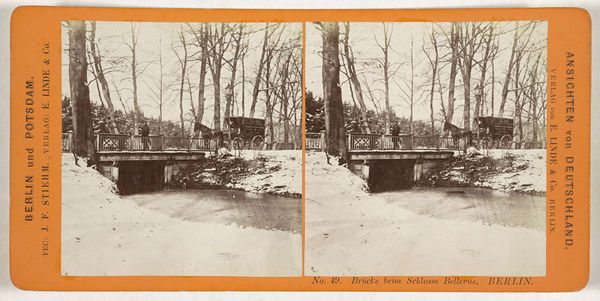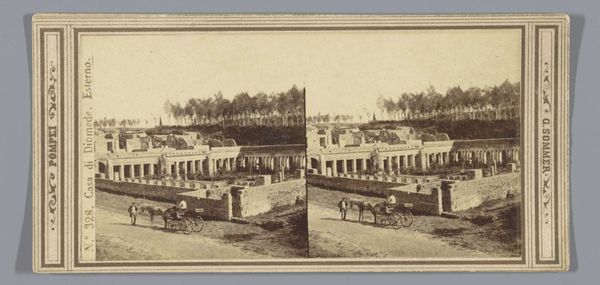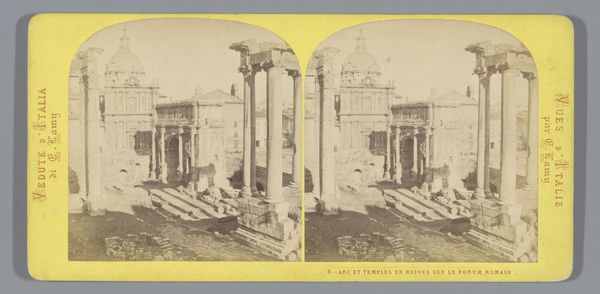
print, photography, albumen-print
# print
#
landscape
#
photography
#
romanesque
#
ancient-mediterranean
#
cityscape
#
albumen-print
Dimensions: height 87 mm, width 178 mm
Copyright: Rijks Museum: Open Domain
Curator: Here we have an albumen print from between 1861 and 1878 by Ernest Eléonor Pierre Lamy, titled "Temple of Jupiter at the Forum of Pompeii". Editor: The shadows feel overwhelmingly long here. It creates such a heavy, solemn atmosphere against the stark remnants. Curator: Absolutely, the sharp contrast speaks to the powerful narrative embedded in this ruin. Jupiter, king of the gods, associated with power, law, and order, overlooking a bustling forum—the very heart of civic life. Editor: It is intriguing to consider the materiality, those robust columns of stone reduced over time to what is visually quite brittle looking ruins through erosion and catastrophe. Pompeii as a site froze the lives of working people alongside patricians and its deity figures, all consumed in one natural disaster, all processed materially. What was the community, its consumption and production like here? Curator: Indeed. The archaeological find and the distribution of this very print also reflect a revival of Romanesque themes in art. People found meaning in the distant past that informed their cultural identity of the present, echoing a time of empire and civic virtue, especially within the framework of nascent European nationalism. Editor: Thinking of photography during this period—the materials, the laborious process of creating albumen prints—such work allowed the world to disseminate a shared experience with sites of "high" culture, like the Pompeii, creating a market that both mythologized and exoticized that moment. Who produced this albumen, how were they treated at the time? That context is critical to understanding not just the "beauty" but also the socioeconomic system enabling it. Curator: Lamy's lens allows us a glimpse not just into stone, but also the emotional weight of history, offering an understanding that material forms held specific, deeply felt connections. We observe that even in ruins, cultural memory speaks volumes, echoing a grand civilization whose symbolic reach transcended mere physical reality. Editor: A poignant, multilayered piece—reflecting on ruins as artifacts of cultural value produced with specific social impact as evidence of more comprehensive social conditions.
Comments
No comments
Be the first to comment and join the conversation on the ultimate creative platform.
